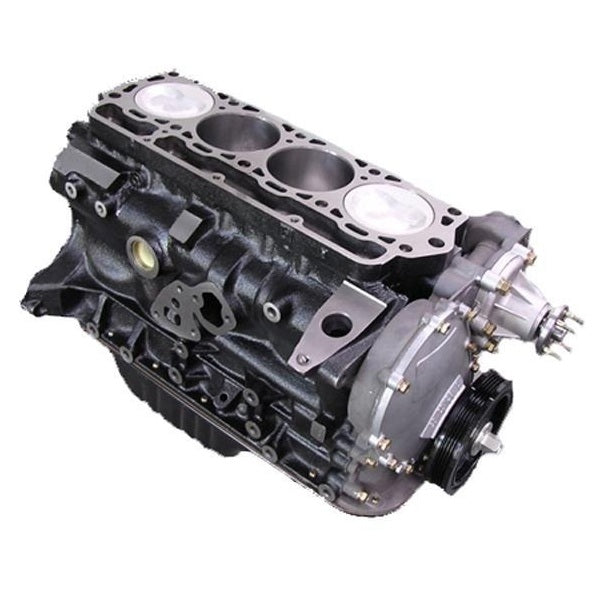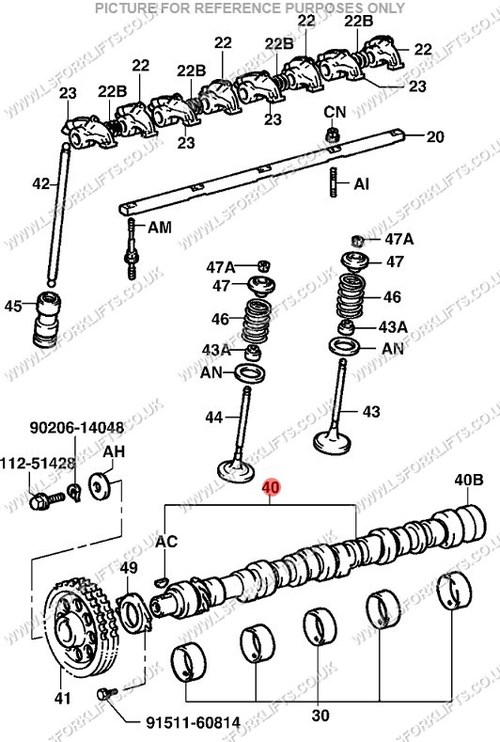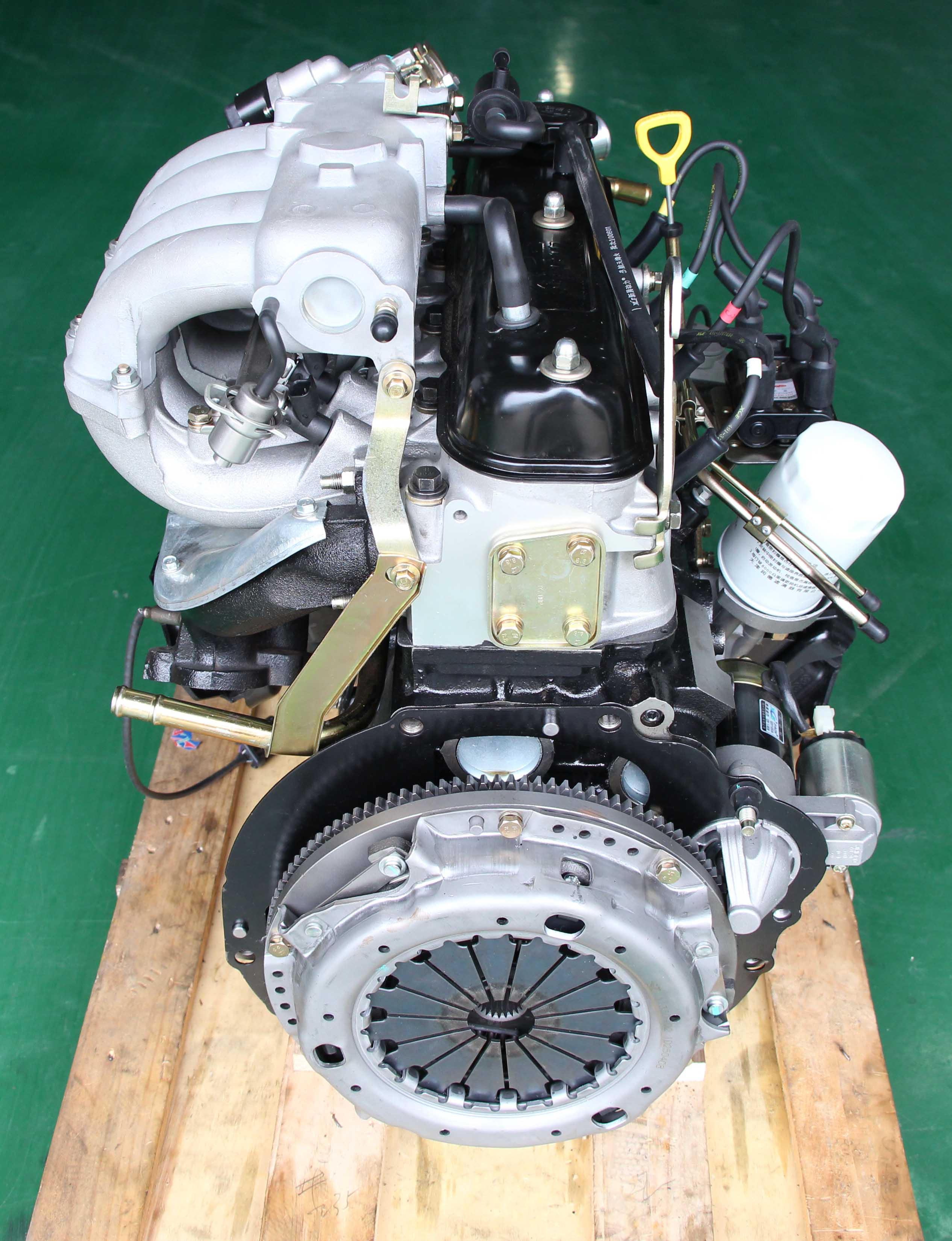Understanding the Mechanics Behind the 4Y Engine’s Power and Durability
Why the Engine Is the most effective Option for Performance and Effectiveness in Your Vehicle
The engine continues to be an essential component in vehicle design, largely due to its substantial influence on both efficiency and efficiency. As advancements in modern technology enable smaller sized engines to deliver exceptional power while optimizing gas economy, the combination of attributes such as turbocharging and hybrid systems ends up being increasingly crucial. These innovations not just improve driving experience but additionally address ecological problems. Nevertheless, the inquiry arises: exactly how do these components coalesce to redefine our understanding of vehicle performance? Exploring this equilibrium discloses deeper understandings into the future of engine layout.
Understanding Engine Types
Understanding the various sorts of engines is essential for enhancing performance and effectiveness in vehicle style. The main engine types include interior combustion engines (ICE), electric engines, and hybrid systems, each offering distinct advantages and limitations.
Internal combustion engines, which can be further classified right into gas and diesel variations, rely upon the combustion of fuel to produce power. Gasoline engines usually provide greater RPMs and much better acceleration, while diesel motor are recognized for their torque and fuel efficiency, making them ideal for sturdy applications.
Electric engines, on the various other hand, utilize electrical motors powered by batteries or fuel cells. They offer rapid torque shipment, resulting in smooth velocity and lower emissions. The performance of electric engines is significantly greater than that of ICEs, making them a prominent choice for eco-conscious customers.
Hybrid systems incorporate both internal burning and electric engines, leveraging the toughness of both innovations. They optimize gas intake by utilizing electrical power at lower rates and changing to gasoline or diesel for greater speeds or larger tons.
Choosing the appropriate engine kind is important for achieving wanted performance metrics and ecological sustainability in contemporary vehicle engineering.
The Effect of Engine Size
Engine dimension frequently plays an essential duty in figuring out an auto's performance and performance. Usually measured in liters or cubic centimeters, engine dimension directly influences the power outcome and torque qualities of a lorry.
Nevertheless, raised engine size typically associates with reduced fuel performance. Bigger engines consume even more gas, leading to higher emissions and operational costs. Manufacturers have to stabilize the need for power with the requirement for fuel economic climate. Smaller engines can supply ample performance for everyday driving while promoting far better performance, making them a prominent option in mid-size and compact vehicles.
Furthermore, developments in engine design, such as turbocharging and straight fuel shot, allow smaller sized engines to accomplish power degrees similar to their larger equivalents. This trend stresses the value of not exclusively concentrating on engine dimension however likewise considering total car layout and innovation (4y engine). Inevitably, the effect of engine dimension on performance and performance underscores the demand for consumers to examine their specific driving demands and preferences when selecting an automobile
Advanced Engine Technologies
Technologies in engine innovations have actually considerably reshaped the landscape of auto efficiency and efficiency, building upon the foundational ideas developed by engine dimension. Notably, developments such as turbocharging and direct fuel injection have actually allowed smaller sized engines to supply power degrees formerly connected with larger counterparts. Turbochargers compress air entering the engine, enabling for boosted power outcome without an equivalent rise in engine dimension, while straight shot maximizes gas distribution, boosting burning performance.
Furthermore, variable shutoff timing systems have actually become an essential modern technology, allowing engines to readjust shutoff operation based on driving conditions. This versatility enhances both performance during acceleration and gas performance throughout travelling. Hybrid and electric engine technologies further highlight the change in vehicle style, combining traditional internal burning engines with electrical motors to maximize performance while lowering discharges.
Additionally, developments in materials scientific research have find here resulted in lighter, more sturdy engine elements, even more boosting efficiency and longevity. The assimilation of sophisticated electronics and engine control devices likewise permits real-time changes, making sure ideal performance across numerous conditions. Jointly, these sophisticated engine innovations not just improve lorry efficiency however also add to a much more sustainable automotive future, showing the ongoing advancement of engine design.
Harmonizing Power and Efficiency
Striking an equilibrium between power and efficiency is important in modern automotive style as manufacturers seek to fulfill significantly strict emissions guidelines while satisfying customer need for performance (4y engine). The obstacle depends on enhancing engine attributes to deliver robust power result without compromising gas economy
To accomplish this equilibrium, engineers utilize numerous strategies, such as turbocharging, which improves engine power by compeling in more air, permitting a smaller sized engine variation that boosts fuel effectiveness. Variable valve timing innovations likewise play a substantial role, allowing engines to change their efficiency features based upon driving conditions, thus improving both power and effectiveness.
In addition, advancements in materials and producing methods have actually brought about lighter engine parts, which reduce overall car weight and improve fuel effectiveness without jeopardizing power. Hybrid innovations have likewise emerged as a feasible option, integrating standard interior combustion engines with electric powertrains to offer a boost in performance while maintaining reduced exhausts.

Future Fads in Engine Style

Furthermore, the growth of advanced products, such as lightweight compounds and high-strength alloys, is readied to revolutionize engine elements. These materials not just minimize weight but additionally improve thermal effectiveness, thus maximizing performance. In addition, manufacturers are checking out variable compression proportions, allowing engines to adapt to various driving problems, enhancing both power outcome and gas economy.
Additionally, the surge of synthetic knowledge and artificial intelligence in engine style is making it possible for anticipating maintenance and real-time performance optimization. This innovation can cause engines that self-adjust for optimal efficiency based on driving patterns.

Conclusion
To conclude, the engine offers as a critical part in achieving optimal performance and efficiency in modern cars. Advanced innovations, such as turbocharging hop over to here and crossbreed systems, improve power outcome while lessening gas usage and discharges. The interaction between engine size and design continues to develop, driving developments that balance exciting performance with environmental sustainability. As automobile engineering progresses, the concentrate on creating reliable, effective engines will certainly stay critical in shaping the future of transportation.
Additionally, advancements in engine layout, such as turbocharging and direct fuel shot, allow smaller sized engines to accomplish power levels equivalent to their bigger counterparts.Innovations in engine modern technologies have significantly improved the landscape of automobile efficiency and effectiveness, building upon the fundamental concepts developed by engine size. Turbochargers press air going into the engine, allowing for boosted power output without an equivalent increase in engine dimension, while direct shot optimizes gas delivery, improving combustion performance.
Hybrid and electrical engine technologies better illustrate the change in automotive style, combining standard internal combustion engines with electrical motors to optimize efficiency while minimizing exhausts.
Collectively, these sophisticated engine technologies not only boost vehicle performance yet also contribute to a much more lasting automotive future, demonstrating the recurring advancement of engine layout. (4y engine)